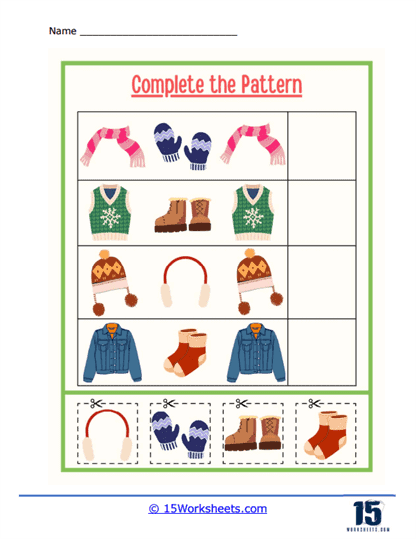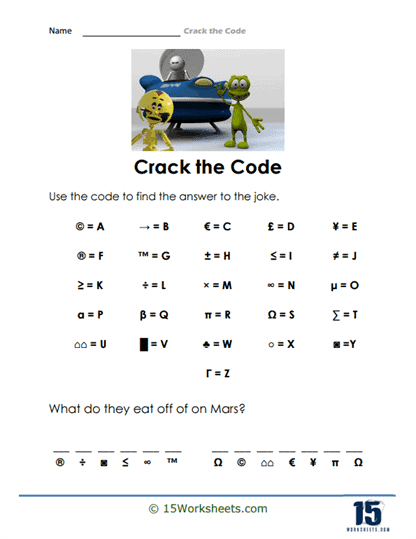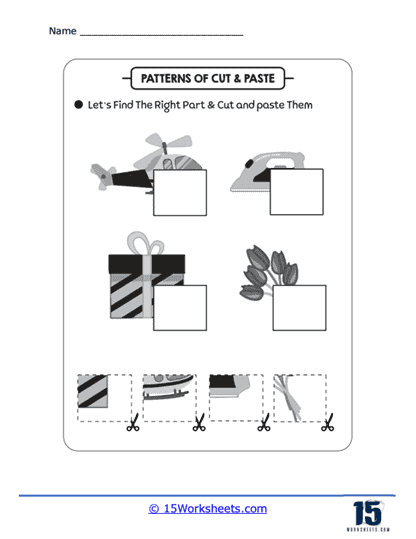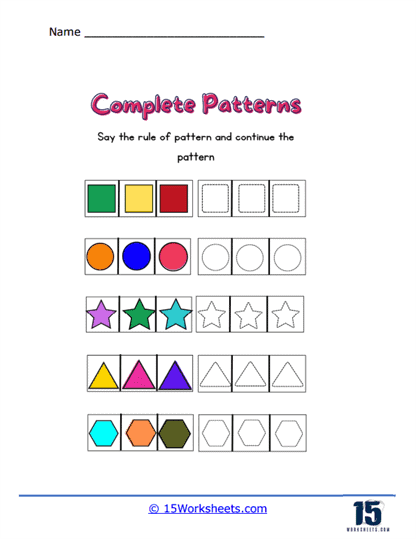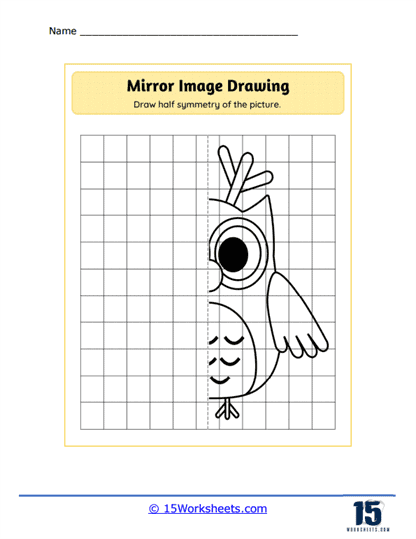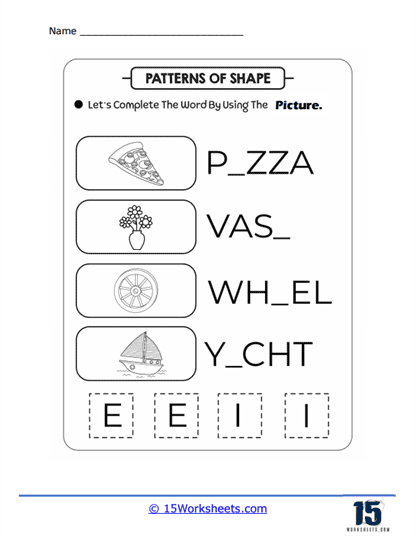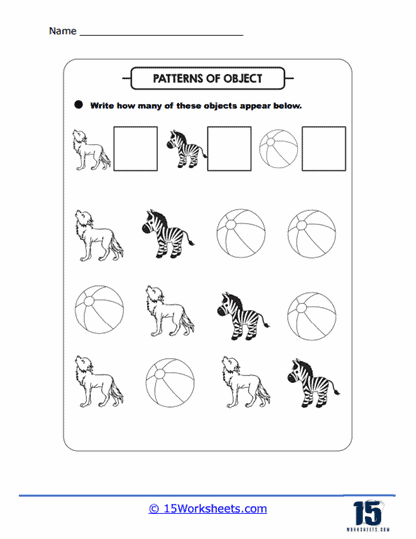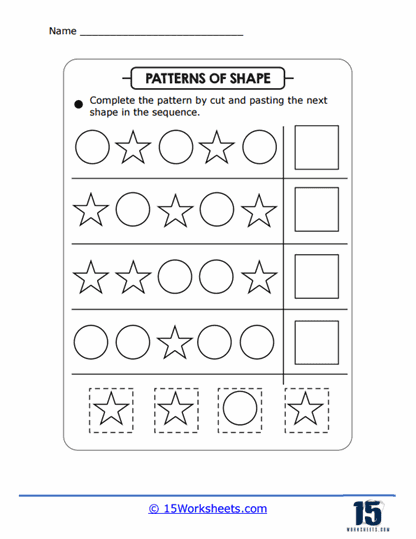Patterns Worksheets
About Our Patterns Worksheets
Complete the Pattern Worksheets
Students identify and complete patterns in a variety of contexts in this series of free worksheets. With a focus on topics like shapes, objects, and colors, these worksheets provide ample practice for students to develop their pattern recognition skills.
These worksheets offer a range of exercises to help students develop their problem-solving and critical thinking skills in a fun and engaging way. With a variety of puzzles, riddles, and codes to solve, these worksheets challenge students to apply their knowledge of math concepts and logic to crack the code and uncover the hidden message.
Cut and Paste Patterns Worksheets
This collection of worksheets provide a hands-on approach to help students understand how to identify and complete patterns. With a variety of patterns to cut and paste, including objects and animals, the exercises in these worksheets offer a fun and interactive way for students to develop their pattern recognition skills.
The pattern recognition and problem-solving skills of students are improved by completing these worksheets. With a variety of patterns to extend, including shapes and colors, they challenge students to use their critical thinking skills to identify and continue patterns. With detailed instructions, these worksheets provide ample practice to help students build their skills and gain confidence in pattern recognition.
By drawing the mirror images of the pictures on these worksheets, students develop their spatial awareness and drawing skills in a fun and interactive way. With different objects and animals to mirror, these worksheets encourage students to apply their knowledge of symmetry and reflection to create accurate mittot images.
Patterns of Letters Worksheets
Through this series of worksheets, students showcase their knowledge in the alphabet, in recognizing and completing patterns, and their vocabulary skills by supplying incomplete words with the missing letters. By providing students with such creative and engaging exercises, they are gradually introduced to pattern recognition and spatial reasoning in ther learning.
Patterns of Objects Worksheets
Vocabulary skills, spatial recognition on various objects and living things, and pattern analysis are the skills that are being tested through these worksheets. Students are guided to accomplish a wide range of exercises to gain mastery in this topic through the clear instructions provided.
The pattern in a sequence of various basic shapes are easier to recognize than specific objects. This series of worksheets is perfect for students who are only beginning to incorporate pattern recognition in their learning.
Why Is It Important To Learn Repeating Patterns?
Learning repeating patterns is vital for several reasons, spanning from cognitive development to real-world applications. Here’s why it’s important:
Building Blocks of Mathematics – Repeating patterns are fundamental to the field of mathematics. Understanding repeating patterns lays the foundation for algebraic thinking, as it involves identifying and understanding relationships and making predictions. It’s a starting point for recognizing sequences and series, which are fundamental in higher-level math. Identifying patterns requires children to observe, make predictions, and reason logically. As such, learning repeating patterns is crucial in developing critical thinking and problem-solving skills.
Understanding the World – Patterns are everywhere in the world around us, from the natural environment to the rhythms and routines of daily life. Recognizing these patterns helps us to understand and predict how things work. For young learners, understanding patterns aids in the comprehension and anticipation of daily routines. This can provide a sense of security and control, supporting their emotional and social development.
Language and Reading Skills – Patterns are not just mathematical; they’re linguistic too. The structure of language, such as the order of words in a sentence or the rhythm and rhyme in songs and poems, all involve patterns. Therefore, learning repeating patterns can improve language and reading skills.
Music and Arts – A basic understanding of patterns also plays a key role in music and arts. In music, rhythms and melodies follow patterns, while in arts, patterns contribute to the aesthetic composition of the artwork.
Science and Technology – Repeating patterns are inherent in scientific phenomena and technological algorithms. In science, patterns help us understand natural and physical phenomena. In computer science, patterns form the basis of algorithms and coding.
Preparation for Advanced Mathematical Concepts – Understanding patterns prepares students for more complex mathematical concepts such as multiplication, division, and functions. For example, a child who knows the pattern of “add 2” (2, 4, 6, 8, …) can more easily grasp the concept of multiplication by 2. Understanding repeating patterns can enhance problem-solving abilities. Many puzzles and problems require the identification of patterns to arrive at the solution.
Life Skills – Recognizing and understanding patterns can help develop essential life skills like making predictions, understanding trends, and making informed decisions. For example, understanding patterns in personal spending can lead to better money management.



